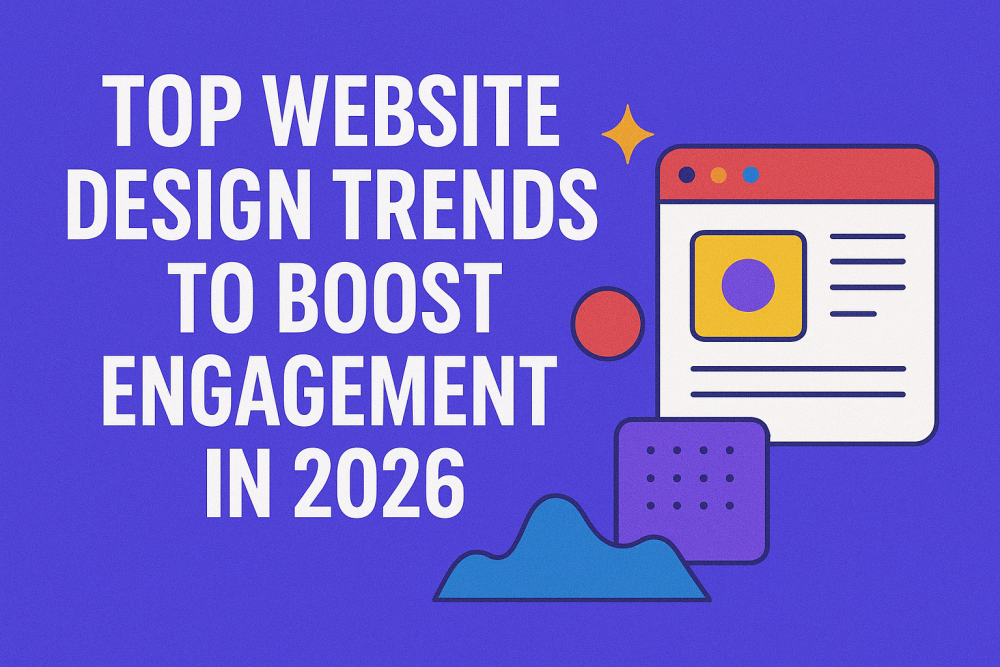Introduction
The digital landscape in 2026, where a considerable number of organizations will be undergoing digital transformation, demands more than just a beautiful website; it requires a smart, personal, as well as deeply engaging experience. As users become more technologically advanced and AI reshapes the backend process, the primary focus of top-tier web design is shifting from static presentation to dynamic, as well as user-centric interaction. In order to boost engagement, designers must implement three major aspects including Hyper-Personalization, Immersive Interactivity, and Functional Aesthetics.
The AI-Powered Engagement Revolution: Hyper-Personalization
The most transformative trend for boosting engagement is the incorporation of AI-driven hyper-personalization. Nowadays, generic websites are becoming obsolete. In 2026, the best platforms will be the one that know its visitors along with their preferences.
- Adaptive Layouts: Websites will mostly use machine learning for evaluating real-time user behavior, device type, as well as location for automatically adapting the layout, content hierarchy, as well as calls-to-action (CTAs). If a user recurrently browses a particular product category, the homepage on their next visit will instantly highlight any new arrivals or case studies which are relevant to that interest. This helps in lowering cognitive load as well as friction, which in turn directly increases conversion rates.
- Conversational UI: Advanced AI chatbots along with virtual assistants are growing from simple Q&A tools to seamless conversational interfaces. They will be visually incorporated into the website design, which in turn will assist in offering proactive, contextual assistance that can guide the user’s journey, for example, automatically suggesting a help article which is based on a user’s lingering cursor position. This real-time support helps in removing pain points, which in turn makes the experience feel more human as well as efficient.
Immersive Interactivity & Motion
Nowadays, websites are moving beyond simple flat design to create deeper, as well as more memorable visual experiences in order to get attention in a crowded online world.
- Meaningful Micro-Animations: Subtle, purposeful motion plays an important role. Micro-animations, like gentle bounce of a button on hover or a form field that subtly reacts to input, helps in offering tactile feedback which confirms an action has taken place. These “micro-delights” helps in improving usability, which in turn makes the interaction feel polished, while increasing user satisfaction.
- Purposeful 3D and Scroll Storytelling: Lightweight, responsive 3D elements are no longer just optional elements. They are used for creating immersive product playgrounds which enables users to interact with a 3D model, change configurations or even view a virtual showroom. In addition, scroll-triggered animations helps in converting the simple act of scrolling into a narrative, unfolding content section by section, which in turn assists in keeping the visitors captivated while moving down the page.
Functional Aesthetics: Clarity and Comfort
Although new technology helps in driving personalization, a renewed focus on main design principles assists in ensuring speed, comfort, as well as inclusivity.
- The Return of Bold, Kinetic Typography: With minimalist layouts continuing to dominate, typography has become the main visual element as well as brand voice. Oversized, dynamic fonts not only command attention, rather they can also be animated (kinetic typography) or responsive, changing weight or size based on the scroll depth of users. This trend helps in making sure that the core message is delivered instantly and with maximum impact as well.
- Dark Mode and Low-Light UX: Dark mode feature has matured from a new innovation to a user expectation. Designing with a flexible, low-light user experience (UX) in mind plays an essential role for lowering eye strain, specifically for users browsing for prolonged periods. This focus on user comfort is considered to be a key part of inclusive as well as accessible website design.
- Accessibility by Default: Designing for ensuring maximum accessibility is no longer just a compliance measure, it is has now become a key engagement strategy. Features like high-contrast ratios, improved keyboard navigation, as well as clear semantic structure helps in improving the experience for users with disabilities and power users, which in turn contributes to lower bounce rates across the board.
Conclusion
In 2026, the websites to win will be the ones which combine AI-powered intelligence with human-centered design. By mainly focusing on personalization, adopting purposeful motion, and building on a foundation of clarity as well as comfort, businesses can create digital experiences that don’t just look good, but actively engage and even convert their audience.
